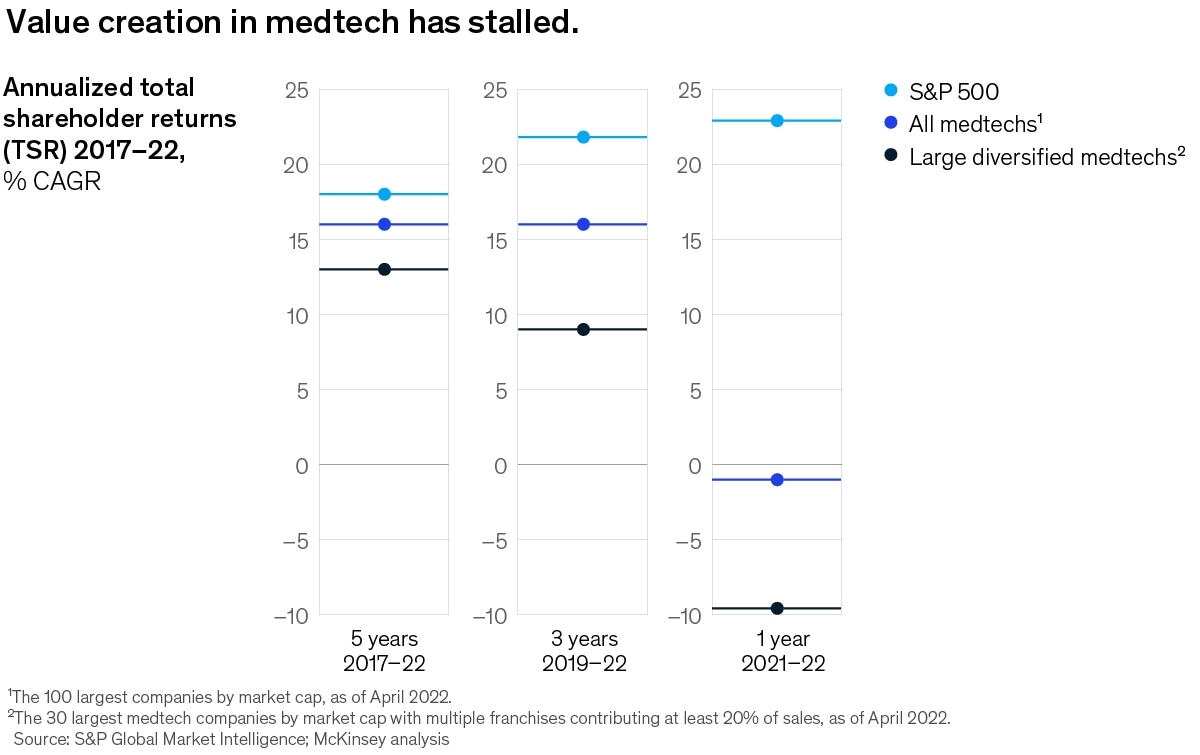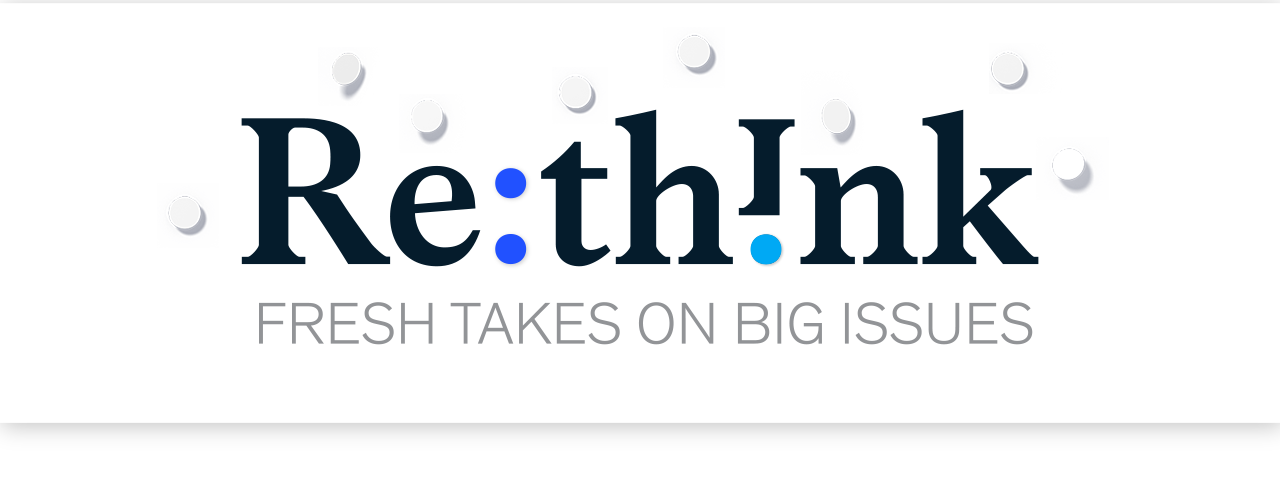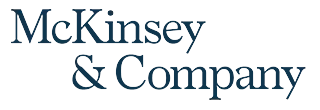Archives
- By thread 5363
-
By date
- June 2021 10
- July 2021 6
- August 2021 20
- September 2021 21
- October 2021 48
- November 2021 40
- December 2021 23
- January 2022 46
- February 2022 80
- March 2022 109
- April 2022 100
- May 2022 97
- June 2022 105
- July 2022 82
- August 2022 95
- September 2022 103
- October 2022 117
- November 2022 115
- December 2022 102
- January 2023 88
- February 2023 90
- March 2023 116
- April 2023 97
- May 2023 159
- June 2023 145
- July 2023 120
- August 2023 90
- September 2023 102
- October 2023 106
- November 2023 100
- December 2023 74
- January 2024 75
- February 2024 75
- March 2024 78
- April 2024 74
- May 2024 108
- June 2024 98
- July 2024 116
- August 2024 134
- September 2024 130
- October 2024 141
- November 2024 171
- December 2024 115
- January 2025 216
- February 2025 140
- March 2025 220
- April 2025 233
- May 2025 239
- June 2025 303
- July 2025 176
-
What’s the biggest fear holding us back from being innovative at work?
McKinsey&Company
Five fundamentals of innovation culture .

Fear and innovation In the news • Hidden tensions. Success can be elusive when it comes to innovation. About three-quarters of new product launches fail. Such failures are often blamed on bad luck, or a shortage of talent or money. But the true causes are tensions arising from dynamic work settings, according to academic research. If mismanaged, these tensions can damage organizations. For instance, leaders should know when it is better to be disciplined versus flexible. It’s often better to be disciplined when selecting the right opportunity, but executing it calls for greater flexibility. [MIT] • Rethinking uncertainty. When early humans came across a cave, that could have meant they found a safe place to rest or, if a predator was hiding in that cave, just the opposite. To keep us alive, the brain interprets not knowing as threatening. That’s why uncertainty can feel scary. The brain’s bias for certainty is so strong that it makes up stories to provide closure. But when we prematurely fill in the blanks, we can oversimplify complex issues. Accepting uncertainty, however uncomfortable, allows us to be open to new ideas. [Quartz] 
We were intrigued to find that the fear of career impact emerged as the biggest differentiator between those who work at top innovation companies and others. 
On McKinsey.com • Three fears. Innovation is critical to growth. But fear can stop experimentation in its tracks, leading to less creativity and less ambitious ideas. To learn how organizations successfully create a culture of innovation, McKinsey surveyed and interviewed executives who lead innovative projects around the world. The top three fears holding back corporate innovation were fear of criticism, fear of uncertainty, and fear of negative impact on one’s career, McKinsey research found. Yet nine out of ten companies are doing nothing to relieve these fears. • Embolden employees. Executives at the leading innovators say that their workplaces are filled with positive energy and enthusiasm. Helping colleagues move past fear isn’t easy, but it’s necessary for companies to build a true culture of innovation. By providing employees with psychological safety, a purpose that prizes innovation, and recognition and rewards, organizations can embolden employees to be willing to risk failure. Explore five fundamentals of innovation culture and how top innovators nurture creative ambition. — Edited by Belinda Yu Get fearless 
Was this forwarded to you? Sign up here. Or send us feedback — we’d love to hear from you. 

Follow our thinking 


This email contains information about McKinsey’s research, insights, services, or events. By opening our emails or clicking on links, you agree to our use of cookies and web tracking technology. For more information on how we use and protect your information, please review our privacy policy. You received this email because you subscribed to the On Point newsletter. Manage subscriptions | Unsubscribe Copyright © 2022 | McKinsey & Company, 3 World Trade Center, 175 Greenwich Street, New York, NY 10007
by "McKinsey On Point" <publishing@email.mckinsey.com> - 10:28 - 14 Jun 2022 -
Probing reality and myth in the metaverse
the Daily read
Grasp the discrepancies .
Share this email 



AN ARTICLE A DAY, PICKED BY OUR EDITORS 
Are you ready to dive into the metaverse? Whether you’re a proponent or a skeptic, chances are, you are already engaging in some form of the metaverse in your daily lives through immersive devices and experiences. While there is so much information about what it is, what it is not, who it is for, and how it is used, it is clear that consumers will be the driving force in its evolution, according to a new article. Get updated on the current consumer sentiment about the metaverse plus the six myths, and be prepared for the future. — Joyce Yoo, digital editor, New York 
Probing reality and myth in the metaverse Despite some skepticism, our recent insights show that Americans of all ages are ready to embrace the metaverse. Grasp the discrepancies 

Quote of the Day —Rishad Premji, executive chairman of Wipro, on the company's cultural transformation in “Inside Rishad Premji’s quest to create a high-performing culture at Wipro” 
Chart of the Day 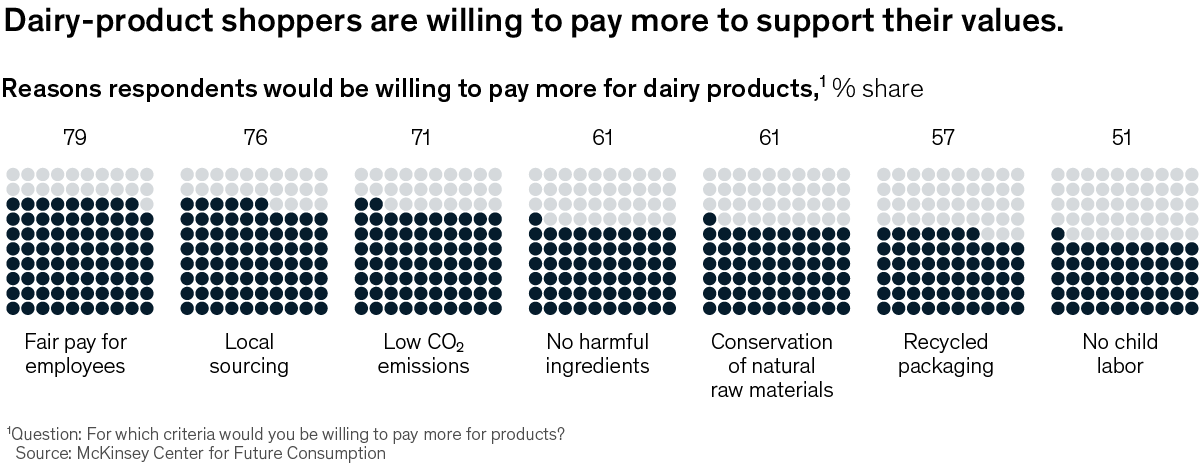
See today’s chart 
Also New 

Black representation in the beauty industry Black beauty consumers and brands face deep challenges when it comes to equity. Removing those barriers can lead to greater opportunity for everyone in the industry. Flip the script 


Growth sprouts for SMEs in e-commerce Small and medium-size enterprises (SMEs) can capture a share of Europe’s booming online home-and-garden market—if they fine-tune customer insights and build new capabilities. Build new capabilities 


Author Talks: How to build a damn good business Business guidance can hinge on an assumption of existing financial access, making the advice irrelevant to budding entrepreneurs with less privilege. Kathryn Finney seeks to level the playing field. Make it fair 


Follow our thinking 



Share these insights Did you enjoy this newsletter? Forward it to colleagues and friends so they can subscribe too.
Was this issue forwarded to you? Sign up for it and sample our 40+ other free email subscriptions here.This email contains information about McKinsey’s research, insights, services, or events. By opening our emails or clicking on links, you agree to our use of cookies and web tracking technology. For more information on how we use and protect your information, please review our privacy policy. You received this email because you subscribed to the Daily Read newsletter. Manage subscriptions | Unsubscribe Copyright © 2022 | McKinsey & Company, 3 World Trade Center, 175 Greenwich Street, New York, NY 10007
by "McKinsey Daily Read" <publishing@email.mckinsey.com> - 06:49 - 14 Jun 2022 -
Buy A20 Colour IP Phone at Best Prices Available!!
Buy A20 Colour IP Phone at Best Prices Available!!
Never again prices to enjoy seamless communication  [ Image ]
[ Image ] [ Image ]
[ Image ]Exclusive Price - 2899 INR*
 [ Image ]
[ Image ] [ Image ]
[ Image ]Call Now
+91-9888018771
Write to us at apacmarketing@sangoma.com
*plus taxes
Free Video Conferencing and Collaboration with Sangoma Meet™ meet.sangoma.com
Sangoma Technologies
100 Renfrew Drive, Suite 100Markham ON L3R 9R6 CANADA
This email was sent to info@learn.odoo.com. If you no longer wish to receive these emails you may unsubscribe at any time.
by "Sangoma Technologies" <webannounce@sangoma.com> - 04:32 - 14 Jun 2022 -
Level up your Kubernetes observability with New Relic
New Relic
Visually navigate your entire stack with New Relic Explorer.Level up your Kubernetes observability with New Relic
In this fun and interactive workshop you’ll get hands-on with a working Kubernetes environment, learn about managing and configuring integrations from sources like Prometheus and Fluent Bit, and troubleshoot a range of issues with the New Relic One platform.
You’ll instrument a cluster in just a few clicks with New Relic, and then using a virtual and interactive lab platform you’ll work with powerful kubectl commands to explore the cluster, work with labels, annotations and Helm settings to configure your environment, before working on troubleshooting challenges, and deploying alerts to get notified of future issues.Register Now What you will do during this workshop
- Use a guided install for Kubernetes to instrument your cluster
- Use kubectl commands to query and inspect specific Kubernetes resources
- Learn about Prometheus scrape labels and how to use them to enable Prometheus metric collection
- Learn about Helm values.yaml files and using them to make configuration changes
- Learn how to manage common configuration changes related to Fluent bit and log ingestion in Kubernetes
- Learn about some common issues that may arise in Kubernetes clusters and how to identify them in the New Relic One UI
- Use Terraform to automate the creation of the Kubernetes NRQL alerts above.
Register Now If you have questions along the way, check our docs, community, or take a hands-on lab.
Unsubscribe or change your preferences at any time.
For information about our privacy practices, see our Privacy Policy.
New Relic, Inc. 31-36 Golden Ln, Dublin 8, D08 A5RV, Ireland | +353 (01) 687 6808
View in browser
This email was sent to mberry@newrelic.com as a result of subscribing or providing consent to receive marketing communications from New Relic.
© 2021 New Relic, Inc. All rights reserved.
New Relic logo are trademarks of New Relic, Inc.
This email was sent to info@learn.odoo.com. If you no longer wish to receive these emails, click on the following link: Unsubscribe
by "New Relic" <emeamarketing@newrelic.com> - 03:37 - 14 Jun 2022 -
Learn More About Software Quality Market Trends from IDC Research Director [Webinar Invite]
Join us for a live event!Hey Abul!
If you missed our last email, you may have missed our exciting updated on our newest webinar "Leveraging Automated Software Quality to Optimize Applications and Business."
Join us on June 14th in this informative session where we’ll explore key findings from the recent IDC MarketScape research on Automated Software Quality and Continuous Testing.
Highlights include:
- How shifting left approaches are pulling quality earlier into development to enhance relevance, and responsiveness, time, and expense
- How AI and smart analytics are shaping the future of testing through automation, self-healing, and autonomous testing.
- How to establish effective continuous testing and quality strategies that encompass new and evolving development approaches like cloud-native and no-code/low-code.
Hope to see you there!
Cynthia Gumbert
Can't make it? Register anyway to receive the webinar recording after the event.

This email was sent to info@learn.odoo.com by SmartBear Software, 450 Artisan Way, Somerville, MA. 02145, 617.684.2600, www.smartbear.com. We hope you found this email of interest. However, we value your privacy. If you do not wish to receive future correspondence from us, please click here to manage mail preferences.
by "Cynthia Gumbert" <cynthia@smartbearmail.com> - 01:31 - 14 Jun 2022 -
How are Americans feeling about the economy?
McKinsey&Company
One bright spot from our survey .

Reflecting on the US economy In the news • Turbulent times. Some financial experts are warning that the US economy could plunge into a recession in the next year, despite the current strength of the job market and robust consumer demand. Economists are worried about rising costs to borrowers, which they fear could lead to a sudden decrease in spending. The increasing cost of gas and commodities from the war in Ukraine and supply chain issues related to the COVID-19 pandemic have increased anxieties over a potential downturn. [WaPo] • Prices climb higher. Annual inflation ticked down slightly in April, but other key measures remained worrisome. The consumer price index increased at a brisk 8.3% in April. Core inflation—which policy makers consider an important barometer that helps to predict where inflation is headed—increased 0.6% in April, a speedier pace than its 0.3% increase in March. Services prices are also rising, as industries offer higher wages in response to shortages of workers. [NYT] 
Across almost every demographic, income level, and age group, more respondents believe the US is doing a poor job of providing opportunities for all people. 
On McKinsey.com • Mounting pessimism. Many Americans consider economic opportunity to be increasingly out of reach, despite rising wages, a sizable pick of jobs, and a low unemployment rate, according to McKinsey’s American Opportunity Survey. Across nearly every demographic group, Americans are more pessimistic than they were in two surveys from 2021. In March–April 2022, optimism dipped 5% lower when compared with a survey from six months ago and 3% lower than in a survey conducted a year ago. • Dwindling opportunities. More Americans reported having fewer economic opportunities than they did a year ago and said they expect even fewer opportunities in a year and five years from now. However, there were also bright spots: younger people (aged 25 to 34) had the most positive outlook of all age groups. Among these respondents, optimism was higher across all racial and ethnic groups, and highest among college graduates, higher-income earners, and those living in urban areas. — Edited by Katrina Parker Explore our survey 
Was this forwarded to you? Sign up here. Or send us feedback — we’d love to hear from you. 

Follow our thinking 


This email contains information about McKinsey’s research, insights, services, or events. By opening our emails or clicking on links, you agree to our use of cookies and web tracking technology. For more information on how we use and protect your information, please review our privacy policy. You received this email because you subscribed to the On Point newsletter. Manage subscriptions | Unsubscribe Copyright © 2022 | McKinsey & Company, 3 World Trade Center, 175 Greenwich Street, New York, NY 10007
by "McKinsey On Point" <publishing@email.mckinsey.com> - 10:06 - 13 Jun 2022 -
Black representation in the beauty industry
the Daily read
Flip the script .
Share this email 



AN ARTICLE A DAY, PICKED BY OUR EDITORS 
Black Americans are a major force in the beauty industry. They are responsible for over 11 percent of the total beauty market in the US and spent over $6 billion on beauty products last year. Despite this spending power, however, the industry is rife with inequity—there’s limited resources and funding available for Black beauty brands and entrepreneurs, and Black consumers struggle to find quality products or see themselves represented in ad campaigns. This is a missed opportunity worth $2.6 billion, according to McKinsey research. Take a deep dive into the findings and see how investing in the Black beauty industry could lead to greater equity across the board—for shoppers, entrepreneurs, large beauty houses, retailers, and investors. — Joyce Yoo, digital editor, New York 
Black representation in the beauty industry Black beauty consumers and brands face deep challenges when it comes to equity. Removing those barriers can lead to greater opportunity for everyone in the industry. Flip the script 

Quote of the Day “It’s about going into that room and making everyone believe you are the coolest person they met that day for the sheer fact that you are probably vastly different than what they see on a daily basis. . . . You come in with that, and it helps you maintain that strength and that belief in yourself.” —Kathryn Finney, founder and managing partner of the venture fund Genius Guild, on maintaining a sense of self-worth amid setbacks in a recent Author Talks interview 
Chart of the Day 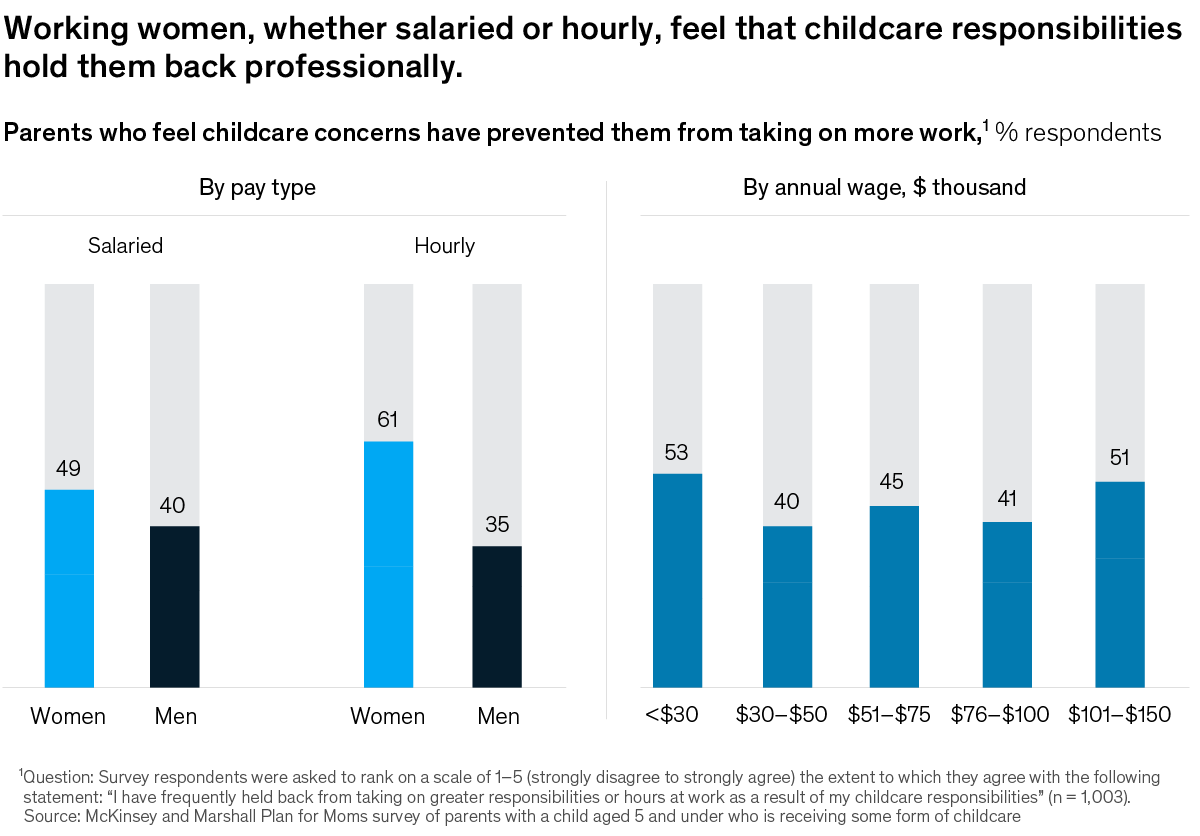
See today’s chart 
Also New 

Semiconductor shortage: How the automotive industry can succeed As the semiconductor shortage persists, the automotive industry will likely benefit from new sourcing models and stronger bonds between OEMs, Tier 1 suppliers, and semiconductor suppliers. Understand the challenges 


Catering to Asian consumers The latest Consumer Pulse Survey reveals an optimism unmoved by current economic and geopolitical challenges, though sentiment may be shifting. How can retailers and consumer goods companies keep pace? Keep pace with sentiment 


What are the biotech investment themes that will shape the industry? From 2019 to 2021, venture capitalists plowed $35 billion into biotech companies with advanced platform technologies that could transform the industry. Accelerate the impact 


Follow our thinking 



Share these insights Did you enjoy this newsletter? Forward it to colleagues and friends so they can subscribe too.
Was this issue forwarded to you? Sign up for it and sample our 40+ other free email subscriptions here.This email contains information about McKinsey’s research, insights, services, or events. By opening our emails or clicking on links, you agree to our use of cookies and web tracking technology. For more information on how we use and protect your information, please review our privacy policy. You received this email because you subscribed to the Daily Read newsletter. Manage subscriptions | Unsubscribe Copyright © 2022 | McKinsey & Company, 3 World Trade Center, 175 Greenwich Street, New York, NY 10007
by "McKinsey Daily Read" <publishing@email.mckinsey.com> - 06:50 - 13 Jun 2022 -
3 Days Left for the Free Webinar on How are AI dash cams transforming transport management systems? Register Now for Free!
3 Days Left for the Free Webinar on How are AI dash cams transforming transport management systems? Register Now for Free!


 We are happy to announce that we’ve collaborated with Howen Technologies for another exciting webinar. On 16th June 2022, expert speakers from Uffizio and Howen Technologies will talk about the role of AI dashcams in the transport industry.
We are happy to announce that we’ve collaborated with Howen Technologies for another exciting webinar. On 16th June 2022, expert speakers from Uffizio and Howen Technologies will talk about the role of AI dashcams in the transport industry.
Tune in with us and learn more about how AI dashcams are changing the face of transport management systems. See how artificial intelligence is affecting fleet management operations.
If you’re in the business of fleet management or simply exploring advanced fleet management solutions—this webinar is for you.
Agenda of the Webinar
1. Company profilesSee what Uffizio and Howen Technologies have to offer you.
2. Why does the transport industry need AI dashcams?Let's speculate why AI dashcams have become so important in the transport sector. The risk of accidents, the rising cost of vehicle repairs, and pricey insurance premiums are just a few reasons to get you started.
3. How are modern dashcams changing the face of fleet management systems?ADAS and DMS have raised the standards of safety. They have changed the way drivers get assessed and monitored. We’ll discuss how AI dashcams can enhance video telematics—in a way that benefits all involved parties.
4. Howen reveals their new Smart AI dashcams!
What makes Howen’s new dashcams so smart? Let’s find out together!
5. How do these AI dashcams function on Uffizio’s fleet management software?You need a fleet management system to store, analyze, and understand the data generated by Howen’s AI dashcams. See how Uffizio’s platform can help you make the most out of your dashcams.
6. Question and AnswersOur speakers will take questions from the audience and answer them in this segment.
Register Your Free Seat Now 
Facebook 
Twitter 
Website 
YouTube 
LinkedIn Want to change how you receive these emails?
You can update your preferences or unsubscribe from this list.
by "Uffizio Technologies Pvt Ltd" <official@uffizio.in> - 08:30 - 13 Jun 2022 -
Sangoma Webinar: Sangoma’s new P- Series phone range for all your PBX & UC solutions
Sangoma Webinar: Sangoma’s new P- Series phone range for all your PBX & UC solutions
Sangoma invites you for an exclusive webinar to introduce Sangoma’s P-Series phone range; offering from value-based to a full touch screen executive model. The Power You Need, The Price You Want!
Introducing Sangoma’s P-Series phone range; offering from value-based to a full touch screen executive model.
About the webinar
Sangoma’s exclusive line of desk phones delivers intuitive functionality and productivity features, for every user type, at a competitive price.
All models include high-definition audio, unprecedented plug-and-play deployment, and advanced built-in applications that include voicemail, call log, contacts, phone status, user presence, parking, and more.Join us for the webinar to gain access to exclusive launch deals and the chance to win your own P Phone.
 [ Image ]
[ Image ]About the Speaker
Aveek Roy
Regional Director
APAC/MEA
For any query please write to APAC Marketing
 [ Image ]
[ Image ]Sangoma Technologies
1st Floor, Building No 6, Madangir , New Delhi 110062 , India | +91 11 4107 1214
This email was sent to info@learn.odoo.com. If you no longer wish to receive these emails you may unsubscribe at any time.
by "Sangoma Technologies" <webannounce@sangoma.com> - 03:01 - 13 Jun 2022 -
Getting digital transformation right: A leader’s guide
Leading Off
Tech smarts .
Share this email 



ESSENTIALS FOR LEADERS AND THOSE THEY LEAD 
According to a popular meme, it isn’t the CEO or the CTO who is leading digital transformation at most companies—it’s COVID-19. The pandemic accelerated digital transformation at a speed once thought impossible: in a matter of months, companies worldwide adopted digital technologies that normally would have taken three to seven years to implement. By mid-2020, some organizations had sped up the development of digitally enhanced products and services by a stunning ten years. Although many companies adopted digital technologies in some form or other decades ago, only in recent years has digital transformation become a critical component of organizational health. The process can include anything from automating manual tasks to moving in-store sales online to delivering better customer experiences. It’s therefore important to become digitally savvy, no matter what your role is in a digital transformation effort. This week, let’s explore some best practices. AN IDEA 
Ensure deep involvement from leadership teams While technology alone can’t guarantee the success of a digital transformation, it is becoming a crucial competitive advantage. More than half of respondents to a McKinsey global survey say that their companies rely on technology to strategically differentiate themselves from competitors. Top performers are ahead of their peers on key digital-technology capabilities and are nearly twice as likely to have technology leaders who shape overall strategy and play a major role in innovation and product development. The best performers are more than twice as likely as the lowest performers to have at least seven top leaders overseeing the technology-related thinking for their organizations. The growing importance of digital signals an urgent need for all leaders in an organization to understand and engage with technology, even if their roles did not call for this in the past. 
A BIG NUMBER 10 Many things can go wrong in a digital transformation, but these ten pitfalls are particularly damaging to its success. Not surprisingly, most of them have to do with fundamental strategic blunders, such as lack of discipline and focus, moving too slowly or too fast, underestimating the talent needed, and—a proven recipe for failure—not learning from mistakes. Once a digital transformation project is under way, it’s essential for senior leaders to monitor its progress by checking digital metrics, especially key markers such as return on investment, spending on technology, and time to market. And if the transformation stalls, improving its economic model can keep the momentum going. 

A QUOTE “It’s best to start with a concentration in a particular area rather than sprinkle a little bit of digital or a handful of analytics use cases broadly across the organization.” That’s just one rule of thumb that McKinsey’s Rodney Zemmel offers up in this podcast on how leaders can assess the transformative value of a digital business. Don’t spread your efforts too thin; rather, increase your odds of success by limiting digital initiatives to a single area at first before extending them to other parts of the organization. Another rule of thumb is to make sure that the transformation is big enough: it may not have much value if its economic impact is less than 15 or 20 percent of an organization’s earnings before interest, taxes, depreciation, and amortization. “If you’re not targeting at least 15 or 20 percent, in our mind it’s hard to call that a transformation and to sustain the level of organizational focus around it,” Zemmel says. 
A SPOTLIGHT INTERVIEW 
“When it comes to seeing a digital transformation through, you have to be practical,” says Alain Bejjani, CEO of Majid Al Futtaim, a global retail and lifestyle conglomerate. “This means you need to have one eye on the telescope—an ambitious vision—and the other eye on the microscope, which are the short-term developments where you have to adapt as you go.” In this interview with McKinsey, Bejjani discusses the critical role that leaders play in achieving this balance. Although short-term results are important to management teams, leaders must take the long view and serve as role models, inspiring and motivating people by creating a learning culture, investing in skill development, and changing course as needed to meet long-term objectives. “It’s important to avoid ‘transformation fatigue,’” Bejjani says. “Sometimes the actions that have had transformative results in the past don’t work as well in the future, or at a larger scale.” 
PARTLY CLOUDY 
Can’t tell MLOps from qubits? Now may be a good time to enhance your tech vocabulary. Machine-learning operations, quantum computing, additive manufacturing, and edge computing are just a few of the advanced technologies that will transform businesses across industries and sectors. Companies are already investing heavily in cloud computing to improve their operations. Without an understanding of the impact of emerging technologies, leaders can’t make informed business decisions. Yet only 7 percent of large companies have digitally savvy executive teams, according to a global survey; those that do outperform companies without such teams by more than 48 percent based on revenue growth and valuation. Lead digitally. — Edited by Rama Ramaswami, a senior editor in McKinsey’s Stamford, Connecticut, office 

Follow our thinking 



Share these insights Did you enjoy this newsletter? Forward it to colleagues and friends so they can subscribe too.
Was this issue forwarded to you? Sign up for it and sample our 40+ other free email subscriptions here.This email contains information about McKinsey’s research, insights, services, or events. By opening our emails or clicking on links, you agree to our use of cookies and web tracking technology. For more information on how we use and protect your information, please review our privacy policy. You received this email because you subscribed to the Leading Off newsletter. Manage subscriptions | Unsubscribe Copyright © 2022 | McKinsey & Company, 3 World Trade Center, 175 Greenwich Street, New York, NY 10007
by "McKinsey Leading Off" <publishing@email.mckinsey.com> - 01:06 - 13 Jun 2022 -
David Gergen tells the boomers leading the US, “It’s time to move on”
McKinsey&Company
Why we need younger leaders .

Passing the torch In the news • Benching old-timers. Some of the most influential US leaders have the same thing in common, declares former presidential advisor David Gergen: they’re too old. Gergen says the baby boomer generation (and their elders) should stop trying to hold onto power and step aside so that young people—including an impressive cohort of veterans and Black women—can lead. An 80-year-old himself, Gergen says the US Executive Office of the President requires a younger, sharper mind. [PBS] • A moral crisis. The US faces a moral crisis that demands the talent of young people, says Gergen. Younger generations are hungry for tough, character-forming leadership experiences, as seen with young activist leaders fighting for changes in the environment and civil rights, he adds. Character, capability, and courage are leadership essentials, yet too many students plan to work in the private sector. We need to offer up public service “in a very big way,” says Gergen. [CBS News] 
“What I see in the younger generations is real promise. They have a steel in them, they have an inner discipline, and they care greatly about the country.” 
On McKinsey.com • New problem solvers. In an interview with McKinsey, David Gergen, who is also a CNN senior analyst and founding director of the Harvard Kennedy School’s Center for Public Leadership, discusses his new book, Hearts Touched with Fire: How Great Leaders Are Made. Gergen contends that the problems facing the US today—including the economy, racial inequalities, and climate issues—require a fresh, dynamic form of leadership. Young Americans show grit and idealism and should be encouraged to enter the political arena, Gergen says. • Harness the power of youth. Gergen believes that the US needs a national service program that would allow young people to work for their communities for a year in exchange for relief from college debt. Businesses can strengthen up-and-coming generations by committing to creating more jobs for people of color. But most of all, older leaders need to recognize when it’s time to step aside and offer the support and counsel the next generations need to eventually take over. — Edited by Katy McLaughlin Empower youth 
Was this forwarded to you? Sign up here. Or send us feedback — we’d love to hear from you. 

Follow our thinking 


This email contains information about McKinsey’s research, insights, services, or events. By opening our emails or clicking on links, you agree to our use of cookies and web tracking technology. For more information on how we use and protect your information, please review our privacy policy. You received this email because you subscribed to the On Point newsletter. Manage subscriptions | Unsubscribe Copyright © 2022 | McKinsey & Company, 3 World Trade Center, 175 Greenwich Street, New York, NY 10007
by "McKinsey On Point" <publishing@email.mckinsey.com> - 12:41 - 13 Jun 2022 -
Join us at Hiring Remote Tech Talent 101 webinar
Join us at Hiring Remote Tech Talent 101 webinar
.png?width=1200&upscale=true&name=Group%201%20(6).png)
Hi MD,
Want to learn how to hire remote tech talent in this competitive landscape? Then register for our next webinar! Hiring experts from VanHack, Remote, and JobGet will demonstrate how companies both big and small can seamlessly and successfully hire remote tech talent from across the globe.
Join us on Tuesday, June 14 at 10:00AM PT | 1:00PM EST to learn:
- The VanHack Remote hiring process.
- How Remote helps with global payroll, benefits, taxes, compliance, and more.
- VanHack Customer Success: JobGet.
Can’t make it? Sign up and get the recording in your inbox later!
Thanks,
Remote
Learn How Automation Hero hires across Europe with Remote
You received this email because you are subscribed to Conferences & Events from Remote Technology, Inc.
Update your email preferences to choose the types of emails you receive.
Unsubscribe from all future emailsRemote Technology, Inc.
Copyright © 2022 Remote Technology, Inc. All rights reserved.
18 Bartol St. #1163 San Francisco California
by "Remote" <hello@remote-comms.com> - 12:05 - 13 Jun 2022 -
The week in charts
the Daily read
Value creation in medtech, lower-carbon energy, and more .
Share this email 



ALL THE WEEK’S DATA THAT'S FIT TO VISUALIZE 
Our Charting the path to the next normal series offers a daily chart that helps explain a changing world—as we strive for sustainable, inclusive growth. In case you missed them, this week’s graphics explored value creation in medtech, the transition to a lower-carbon energy system, remote-first customer service, decarbonization in the petrochemicals industry, and the consumers seeking healthier food. FEATURED CHART Diagnosis? Stalled growth 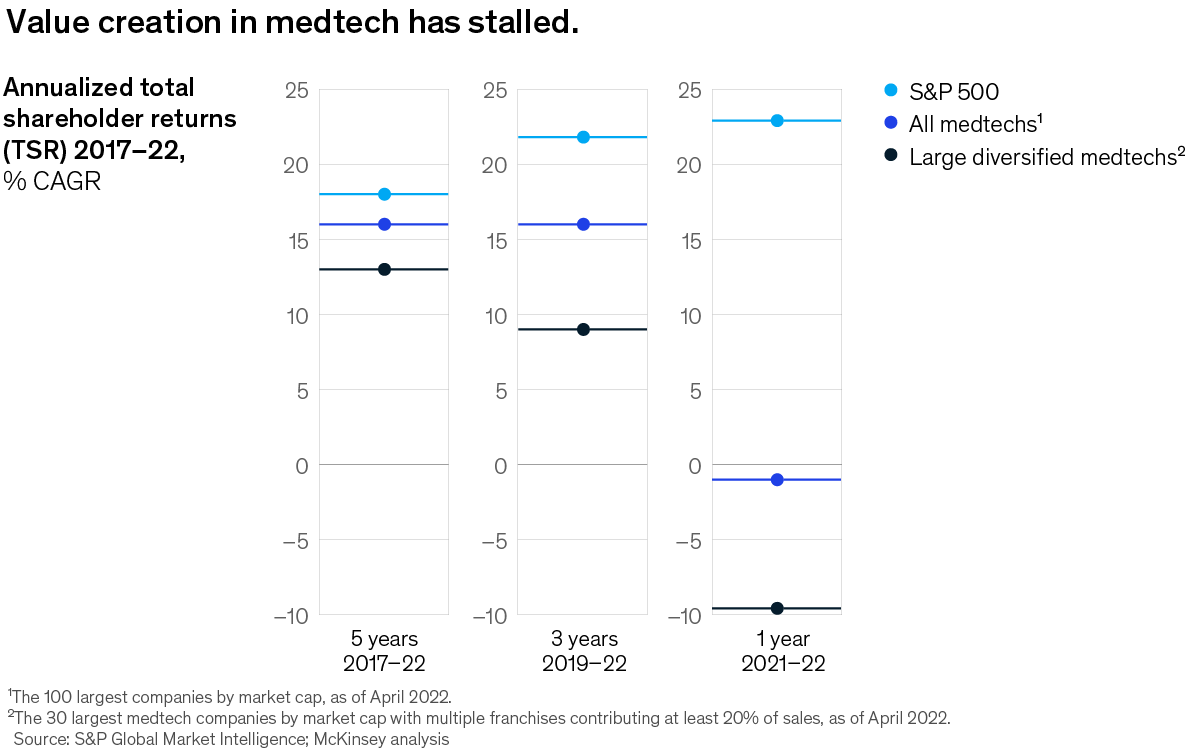
See more 



This week’s other select charts Power forward Customer service without the call All in Millennials go organic 

Follow our thinking 



Share these insights Did you enjoy this newsletter? Forward it to colleagues and friends so they can subscribe too.
Was this issue forwarded to you? Sign up for it and sample our 40+ other free email subscriptions here.This email contains information about McKinsey’s research, insights, services, or events. By opening our emails or clicking on links, you agree to our use of cookies and web tracking technology. For more information on how we use and protect your information, please review our privacy policy. You received this email because you subscribed to The Week in Charts newsletter. Manage subscriptions | Unsubscribe Copyright © 2022 | McKinsey & Company, 3 World Trade Center, 175 Greenwich Street, New York, NY 10007
by "McKinsey Week in Charts" <publishing@email.mckinsey.com> - 03:10 - 11 Jun 2022 -
La guerra en Ucrania está cambiando el mundo
McKinsey&Company
Además, tendencias críticas y riesgos en la economía global .
Comparte este email 



Destacados mensuales, Junio de 2022 A medida que persiste la guerra en Ucrania, las disrupciones en una variedad de frentes están cobrando fuerza y podrían remodelar las industrias y las economías. Este mes, nuestras historias destacadas se sumergen en la fuerza potencial y la dirección de estos cambios y sus efectos en las vidas y los medios de subsistencia, así como en las posibles ramificaciones de la guerra en los requisitos clave para una transición hacia cero emisiones netas más ordenada. Otros destacados en la edición de este mes incluyen los siguientes temas: - Las últimas tendencias críticas y riesgos en la economía global
- Cómo ha evolucionado el sentimiento y el comportamiento del consumidor estadounidense desde que comenzó la pandemia
- Qué hace que una transformación digital sea exitosa
- El futuro de los bienes inmuebles en el lugar de trabajo
La selección de nuestros editores 

La guerra en Ucrania: Doce disrupciones que están cambiando el mundo La guerra está devastando vidas y trastornando los mercados. Aquí hacemos un seguimiento de las disrupciones que, probablemente, darán forma a las vidas y los medios de subsistencia, más allá de la crisis inmediata. Navegue la crisis 





La transición a cero neto tras la guerra en Ucrania: ¿Una desviación, un descarrilamiento o un camino diferente? La invasión de Ucrania, al menos en un principio, complicará el camino de la transición hacia una economía de cero emisiones netas, pero este trágico acontecimiento aún podría ser un punto de inflexión para acelerar el progreso a mediano plazo. Entienda los eventos globales 




LOS DESTACADOS DE ESTE MES 
Resumen ejecutivo de Global Economics Intelligence abril de 2022 En medio de la alta inflación y la guerra en Ucrania, persiste una fuerte demanda; las instituciones de pronósticos recortan sus estimaciones de crecimiento. Comprenda las tendencias mundiales 

Qué están sintiendo, comprando y gastando los consumidores estadounidenses, y qué significa para las empresas La última encuesta Consumer Pulse muestra que, en todo Estados Unidos, la gente ha adoptado nuevos comportamientos y, al mismo tiempo, ha vuelto a sus viejos hábitos. ¿Qué harán a continuación? Conozca las preferencias 

La transformación digital en la agenda del CEO Las transformaciones digitales exitosas pueden no ser tan elusivas como se cree. Los mejores CEOs saben de antemano cómo es el éxito y qué se interpone en su camino. Mejore más rápido 
Los bienes inmuebles en el lugar de trabajo en la era de la COVID-19: De centro de costos a ventaja competitiva Las empresas de hoy deben construir lugares de trabajo que les ayuden a realizar sus estrategias. He aquí por qué y cómo. 3 pasos para la transformación 

Informe sobre el estado de la tecnología de la moda 2022 A medida que se acelera la innovación tecnológica, las empresas de moda tienen la oportunidad de atender mejor a sus clientes y, al mismo tiempo, crear un negocio más eficiente, receptivo y responsable. Manténgase al día 

¿Puede la industria automotriz escalar lo suficientemente rápido? El rápido aumento de la adopción de los vehículos eléctricos podría transformar el ecosistema automotriz y promover innovaciones aún mayores. Para que eso suceda, dos imperativos necesitan atención inmediata. Acelere la evolución 
Podcast Adicional 

Afrontar el reto de la doble jornada de las madres en el hogar y el trabajo A medida que Estados Unidos emerge de la pandemia, ¿cómo pueden las empresas crear un entorno de trabajo más incluyente para mejorar los resultados de las mujeres en la fuerza de trabajo? Escuche y aprenda más sobre el tema 
Esperamos que disfrute de los artículos en español que seleccionamos este mes y lo invitamos a explorar también los siguientes artículos en inglés. 
ALSO NEW What will it take to boost Latino economic power? Marketing in the metaverse: An opportunity for innovation and experimentation Securing Europe’s future beyond energy: Addressing its corporate and technology gap Reflections on 20 years of McKinsey on Finance—and three challenges ahead The childcare conundrum: How can companies ease working parents’ return to the office? Reimagining the future of financial-services headquarters Bias Busters: When the crowd isn’t necessarily wise Author Talks: Tomorrow’s capitalist is socially conscious The role of space in driving sustainability, security, and development on Earth CFO perspectives on leading agile change Around the world, nurses say meaningful work keeps them going Forward Thinking on trade, vaccines, and sustainable and inclusive growth with WTO Director-General Ngozi Okonjo-Iweala Quantum computing just might save the planet 
SPECIAL FEATURES 
The war in Ukraine The Russian invasion of Ukraine has caused the greatest humanitarian crisis in generations. Here’s how leaders can respond. Navigate through uncertainty 

The graduate’s guide Recent insights and interviews to help you hit the ground running at your new job or internship during a period of continuing—and profound—change. See the collection 

Decarbonizing the world’s industries This collection draws together articles and reports that lay out a pathway to net zero for nine emissions-intensive industries. Explore the guide 
The McKinsey Crossword Sharpen your problem-solving skills the McKinsey way, with our weekly crossword. Play now 

McKinsey Classics Simple communication tweaks based on behavioral research can nudge employees into top form. Read our 2016 classic “How small shifts in leadership can transform your team dynamic.” Rewind 

Mind the Gap Read a sample of Mind the Gap, and sign up for it or any of our 40+ free email subscriptions. Subscribe — Curated by Eleni Kostopoulos, a digital publishing manager in McKinsey’s New York office 

Follow our thinking 


McKinsey Insights - Get our latest
thinking on your iPhone, iPad, or Android


Comparta estas ideas ¿Disfrutaste este boletín? Reenvíelo a colegas y amigos para que ellos también puedan suscribirse.
¿Se le remitió este articulo? Regístrese y pruebe nuestras más de 40 suscripciones gratuitas por correo electrónico aquí.Este correo electrónico contiene información sobre la investigación , los conocimientos, los servicios o los eventos de McKinsey. Al abrir nuestros correos electrónicos o hacer clic en los enlaces, acepta nuestro uso de cookies y tecnología de seguimiento web. Para obtener más información sobre cómo usamos y protegemos su información, consulte nuestra política de privacidad. Recibió este correo electrónico porque es un miembro registrado de nuestro boletín informativo Destacados. Manejar suscripciones | Cancelar Copyright © 2022 | McKinsey & Company, 3 World Trade Center, 175 Greenwich Street, New York, NY 10007
by "Destacados de McKinsey" <publishing@email.mckinsey.com> - 08:57 - 11 Jun 2022 -
The Daily Read weekender: Now for something a little different
Harmony Internal - McKinsey
Highlights as you ease into the weekend 
Torea Frey
Managing Editor, SeattleReady for something a little different? The Daily Read is switching things up with a new Friday edition to help you ease into the weekend. You’ll get a glance at our most compelling reads from the week, plus lighter fare to digest in your downtime.
Here’s what broke through this week:• War in Ukraine. The COVID-19 pandemic. Climate change. In a world defined by these and other complex disruptions, how can organizations build resilience to withstand shocks and drive sustainable, inclusive growth? A new paper, free to download, from the World Economic Forum and McKinsey can help.
• Speaking of the global economy—what’s happening with inflation, growth, and more? Our latest Global Economics Intelligence summary offers a snapshot of critical trends and risks.
• Innovation drives growth. Get a lens on how masters of innovation essentials drive outperformance and how virtual work is accelerating innovation. And if you’re holding back worried your big idea will fail, never fear; you can foster a culture that accounts for the human side of innovation.
• Listen to the latest episode of The McKinsey Podcast—this week’s conversation centers on managing the coming wave of investment in capital projects.
• Dr. Jenny Wang dug into why we need to talk about mental health in Asian American communities in the latest from our Author Talks series.
• Our newsletters offered a guide to leadership development, looked at Gen Z in Asia, explored how quantum computing can fight climate change, and more. Missing out? Sign up here to get the best of our knowledge, hand-picked by McKinsey editors. As with all our content, they're free.
Quote of the day
—McKinsey senior partner Acha Leke on the pivotal moments of his career in “The importance of purpose: An interview with Acha Leke”
Chart of the day
rEady to unwind?

56-Across: Diversity ___ inclusion
Know the answer? Test your mettle with the latest McKinsey Crossword.

Kick back with a good book
If you need your next read, get inspiration from best-selling business books prepared exclusively for McKinsey Publishing by NPD and explore interviews plus a collection of books by McKinsey authors.

What does a robotic dog have to do with AI?
Find out in an interactive on gaming, reinforcement learning, and more.
Share these insights
Did you enjoy this newsletter? Forward it to colleagues and friends so they can subscribe too. Was this issue forwarded to you? Sign up for it and sample our 40+ other free email subscriptions here.
This email contains information about McKinsey’s research, insights, services, or events. By opening our emails or clicking on links, you agree to our use of cookies and web tracking technology. For more information on how we use and protect your information, please review our privacy policy. You received this email because you subscribed to the Daily Read newsletter. Manage subscriptions | Unsubscribe Copyright © 2022 | McKinsey & Company, 3 World Trade Center, 175 Greenwich Street, New York, NY 10007
by "McKinsey Daily Read" <publishing@email.mckinsey.com> - 06:59 - 10 Jun 2022 -
A quantum leap in the fight again climate change: Quantum computing
The Shortlist
Plus, marketing meets the metaverse .
Share this email 



Our best ideas, quick and curated | JUNE 10, 2022 View in browser 
This week, how quantum computing has the power to revolutionize the fight against climate change. Plus, the ever-expanding CFO role, and three questions for the director-general of the World Trade Organization. 
Getting back on track. The daunting climate challenges we face can make the future feel overwhelming for many people. But there are technologies out there—and companies pursuing solutions—that give cause for hope. Here, we look at the emerging technology of quantum computing, and how it could transform the economics of decarbonization and become a major factor in limiting global warming to the target temperature of 1.5°C. From millennia to minutes. Quantum computing leverages the laws of quantum mechanics to produce exponentially higher performance for certain types of calculations. (As an example, factoring a 2,048-bit prime number with today’s supercomputer takes about one trillion years, but with quantum, that calculation could take about a minute.) Even though the technology is in the early stages of development, experts estimate that the first generation of fault-tolerant quantum computing will arrive later this decade. Even now, breakthroughs are accelerating, investment dollars are pouring in, and start-ups are proliferating. Tackling the hard stuff. Quantum computing could help to reduce emissions in some of the most challenging or emissions-intensive areas, such as agriculture or direct-air capture, and could accelerate improvements in technologies required at scale, such as solar panels or batteries. In “Quantum computing just might save the planet,” McKinsey looks at how its computational powers could also be harnessed to make the production of cement emissions-free, improve electric batteries for vehicles, develop better renewable solar technology, use green ammonia as a fuel and a fertilizer, and more. In aggregate. Quantum-computing use cases in five key areas could help pave the way to a net-zero economy. By 2035, these use cases could eliminate more than seven gigatons of carbon dioxide equivalent from the atmosphere a year, compared with the current trajectory, or in aggregate more than 150 gigatons over the next 30 years. Glass half full. The transformation of the global economy that’s needed to achieve net-zero emissions by 2050 will require an exceptional mobilization of resources, expertise, and funds. While that transition is fraught with risks and volatility, it will also bring growth opportunities, as decarbonization creates efficiencies and opens markets for low-emissions products and services. Quantum computing, which can solve specific problems that have long been considered insoluble, could help put the goal of limiting global warming within reach. 
OFF THE CHARTS The CFO’s ever-expanding portfolio A new survey of chief financial officers found that these execs have increasing influence in organizations. Between 2018 and 2021, the share of roles reporting to the CFO rose in functions including procurement, investor relations, and digital. 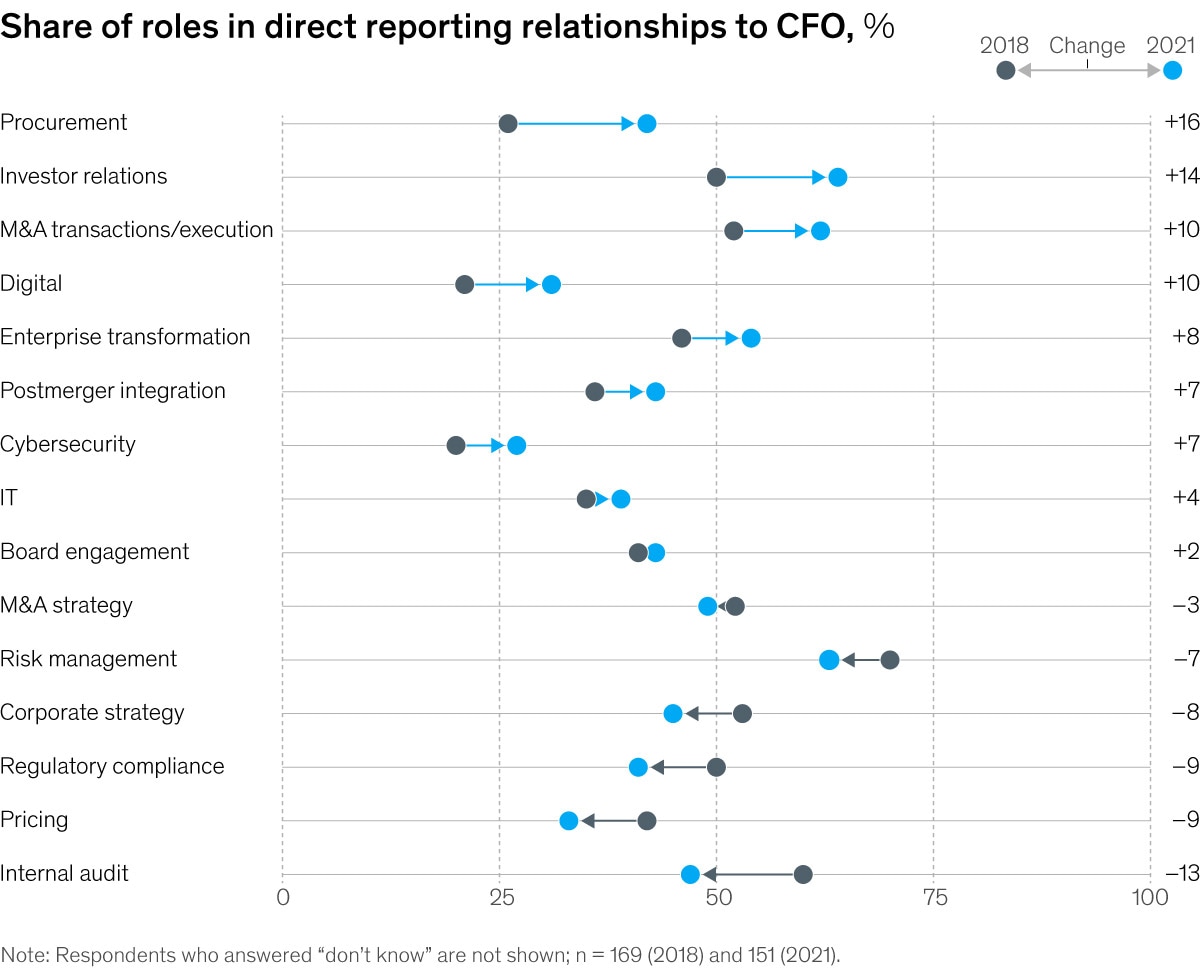
Check out our chart of the day here. 

INTERVIEW A Singapore conglomerate gets singular-minded Keppel Corporation, which started off as a shipyard in the 1960s, has reinvented itself several times over the decades, from expanding into the offshore-rig business to ultimately focusing on energy and the environment, urban development, and asset management. Now, CEO Loh Chin Hua is on a mission to transform Keppel, one of Singapore’s leading conglomerates, into a future-ready organization with strong purpose and relevance. “I don’t think transformation is just a matter of providing a narrative,” he told McKinsey in a recent interview. “You have to show that you can execute well.” 
MORE ON MCKINSEY.COM Marketing in the metaverse | The metaverse represents an opportunity to engage consumers in entirely new ways while pushing internal capabilities and brand innovation in new directions. Here’s how organizations can think about their metaverse marketing strategies for the future. Reimagining the future of financial-services headquarters | All industries are rethinking the future of the office, but the stakes are uniquely high for financial-services firms, which are grappling with how to reorient their offices around learning, inclusion, and innovation. What’s fueling Pakistan’s emerging start-up ecosystem | With a young, English-speaking population and a fast-growing, tech-savvy middle class, Pakistan has many ingredients for a thriving start-up ecosystem. How can it live up to its entrepreneurial potential? 


THREE QUESTIONS FOR Ngozi Okonjo-Iweala The World Trade Organization’s director-general reflects on the impact of the pandemic on global trade, how to make trade more inclusive, and much more. This is excerpted from a recent episode of the McKinsey Global Institute’s Forward Thinking podcast. How has the pandemic affected the global economy and world trade? The most visible impact has been disruptions to supply chains. When the pandemic struck, many businesses decided there was going to be a long or deep recession and they pulled back on investment plans. The massive amounts of fiscal stimulus, particularly in developed countries, and monetary-policy easing created unprecedented demand for goods. That was also heightened by the shift to e-commerce. So we have a supply–demand mismatch that has led to the kind of supply chain issues that we’ve seen. After the initial dip in global trade, the value of trade declined by about 8 percent. We’ve now seen a rebound based on this higher demand. For the first time, trade is growing faster than GDP. As global trade recovers, how do we foster development and shape more inclusive patterns across the world? While trade has rebounded, there’s a real divergence across the world. You see North America, Europe, and Asia bouncing back strongly, but South America, the Middle East, and Africa are rebounding more slowly. What is responsible for this divergence, and how do we make the recovery more inclusive? There are two factors. One is the amount of fiscal stimulus and monetary-policy easing that economies have been able to do. And the other factor is access to vaccines. That’s why I have emphasized that trade policy is vaccine policy. If we want a more inclusive recovery, we’ve got to sharply reverse the vaccine inequality that we see now. A situation in which 66 percent of people in wealthy countries are vaccinated but only single-digit vaccination numbers in low-income countries isn’t going to do it. An IMF study showed that if we can vaccinate 70 percent of the world by mid-2022, we’ll add $9 trillion to the world economy by 2025. That’s a big piece of creating an inclusive recovery, but we’re not there yet. I think trade has been, and will be, quite instrumental to this recovery. One, in getting vaccines and vaccine inputs from where they are made to where they are needed, and outputs to where they are needed. Two, trade can be part of a sustainable recovery, helping external demand in countries that are recovering faster be available to those that are not. What are some of the opportunities to expand trade that have emerged from the crisis? If we look specifically at Africa, the African Continental Free Trade Area is a market of 1.3 billion people. We need to now make use of that to be able to develop certain industries. If we want to trade more, we need to add value to products. We cannot continue selling the same raw materials or barely processed products if we want to move forward. So there’s a huge opportunity on the continent. But the perception of risk on the continent has not changed. The perception of risk far outweighs the actual risk in investing. When you tell people that in some countries, you can get more than a 30 percent rate of return on investment, they don’t believe you. Getting the IFC, the World Bank, and other multilaterals to put in place instruments that can give comfort to investors would help mitigate those risks. Another opportunity relates to digital trade, which underpins so much of the world economy. Creating rules around the use and adoption of digital technologies also helps small enterprises (many helmed by women) compete. And of course one of the ways that enterprises survived during the pandemic was through digital trade, which can also help developing economies increase their participation in world trade. — Edited by Barbara Tierney Share this Q & A 



BACKTALK Have feedback or other ideas? We’d love to hear from you. 
Tell us what you think 

Follow our thinking 



Share these insights Did you enjoy this newsletter? Forward it to colleagues and friends so they can subscribe too.
Was this issue forwarded to you? Sign up for it and sample our 40+ other free email subscriptions here.This email contains information about McKinsey’s research, insights, services, or events. By opening our emails or clicking on links, you agree to our use of cookies and web tracking technology. For more information on how we use and protect your information, please review our privacy policy. You received this email because you subscribed to The Shortlist newsletter. Manage subscriptions | Unsubscribe Copyright © 2022 | McKinsey & Company, 3 World Trade Center, 175 Greenwich Street, New York, NY 10007
by "McKinsey Shortlist" <publishing@email.mckinsey.com> - 09:55 - 10 Jun 2022 -
Buy A20 Colour IP Phone at Best Prices Available!!
Buy A20 Colour IP Phone at Best Prices Available!!
Never again prices to enjoy seamless communication  [ Image ]
[ Image ] [ Image ]
[ Image ]Exclusive Price - 2899 INR*
 [ Image ]
[ Image ] [ Image ]
[ Image ]Call Now
+91-9888018771
Write to us at apacmarketing@sangoma.com
*plus taxes
Free Video Conferencing and Collaboration with Sangoma Meet™ meet.sangoma.com
Sangoma Technologies
100 Renfrew Drive, Suite 100Markham ON L3R 9R6 CANADA
This email was sent to info@learn.odoo.com. If you no longer wish to receive these emails you may unsubscribe at any time.
by "Sangoma Technologies" <webannounce@sangoma.com> - 06:03 - 10 Jun 2022 -
Join McKinsey’s Global Survey Panel

Dear reader,
Since 2004, McKinsey’s Global Survey Panel has engaged tens of thousands of executives in critical research on today’s most vital business, economic, and management issues. We invite you to apply to McKinsey’s survey panel and contribute your insights to these research efforts.
As a member of the survey panel, you’ll have access to these exclusive benefits:
-
Offers to join invite-only webcasts that are hosted by McKinsey experts
-
Membership in our private LinkedIn group, where you can network and exchange ideas with other panelists
-
Carefully curated, world-class knowledge on the survey topic
-
A first look at the survey results before they are published
To apply, please click here to answer a series of demographic questions by Monday, June 27. This one-time request will help ensure that you only receive invitations to surveys that are most relevant to your interests and areas of expertise, and your individual responses—to the demographic questions and all of our surveys—will be kept confidential. You may unsubscribe from the panel at any time.
Please note that you need not complete the questions in one sitting. You can stop at any question and return later by clicking on the link in this email.
Once you apply, we will provide immediate access to our latest survey-based insights..
Sincerely,
Daniella Seiler
Executive Editor, McKinsey Global SurveysThis email contains information about McKinsey’s research, insights, services, or events. By opening our emails or clicking on links, you agree to our use of cookies and web tracking technology. For more information on how we use and protect your information, please review our privacy policy.
If you prefer not to receive future email communications from us, please write to global_unsubscribes@mckinsey.com to unsubscribe from all McKinsey communications.
© [McKinsey & Company, Inc., 3 World Trade Center, 175 Greenwich Street; New York, NY 10007, United States.]
PRIVACY AND CONFIDENTIALITY STATEMENTThis research is being conducted by KS&R, a leading market-research firm, on behalf of McKinsey & Company with an office located at 3 World Trade Center, 175 Greenwich Street, New York, NY 10007, for the purpose of knowledge development and publication. This survey is voluntary, and your survey responses are treated as confidential. Your survey results will be used to produce analyses and reports that are not publicly identified with or attributed to you individually.
The processing of your personal data in connection with this survey is based on your consent to share your demographic data and your views on global business, economic, and management topics. Should one of our surveys ask any question(s) regarding sensitive personal data (e.g., data revealing racial or ethnic origin, political opinions, or sexual orientation), we will ask for your explicit consent before the specific question is posed, and you always have the option not to respond.
McKinsey is committed to respecting your privacy and protecting your personal data, being any information that is capable of identifying you as an individual person, as you participate in the Global Survey Panel. Therefore, KS&R is committed to maintaining the strict confidentiality of such information and providing the same level of data security as provided by McKinsey. If you agree to participate, your identity and responses will remain confidential. You will not be approached for sales purposes, nor will your name be added to other email lists. We are interested in only your feedback and opinions.
Personal data collected when registering for McKinsey’s Global Survey Panel or when responding to a survey may be transferred from time to time to McKinsey subsidiaries and affiliates, or to McKinsey’s third-party vendors, including those in countries that may not have the same data-protection laws as what is found in your own country. Where required by law, we have put in place legal mechanisms designed to ensure adequate data protection of your personal data that are processed by McKinsey subsidiaries, affiliates, and third-party service providers, including the transfer of your personal data to countries other than the one in which you reside.
Your survey responses may be used and retained by McKinsey for research, data analysis, and statistical purposes, including to benchmark and identify insights across survey participants and across surveys. All identifiable responses to the survey will be stored by McKinsey for a reasonable time to fulfill the purposes identified above, and in accordance with internal McKinsey retention policies. The maximum time such identifiable responses may be stored by McKinsey is five years, after which the data will be deleted, destroyed, or otherwise rendered unidentifiable. If you wish to obtain more information about how we process your survey responses, or if you wish to exercise your rights of access, rectification, or erasure, please contact McKinsey_Global_Surveys@executivepanel.mckinsey.com. You can also contact our EU DPO by writing to privacy@mckinsey.com.
Depending on the jurisdiction, you may also have a right to lodge a complaint with your local data protection authority.
By participating in the survey, you agree to the processing by McKinsey of the information set out above in the manner and purposes described above.
by "McKinsey’s Global Survey Panel" <mckinsey_global_surveys@executivepanel.mckinsey.com> - 01:30 - 10 Jun 2022 -
-
Nonpromotable work can hurt women’s careers. Why do so many women do it?
McKinsey&Company
That’s a no from me .

Saying ‘yes’ to no In the news • Why we say ‘yes.’ Saying “no” to work requests can be difficult for myriad reasons. People are social creatures, for one. There is also reciprocity bias and fear of reputational costs—and of damaging a work relationship. Plus, remote work can impede saying “no,” since colleagues miss the relational connection that comes from being in the same physical space. But there are just as many reasons to say “no,” including avoiding becoming overwhelmed and even burned out. Setting career goals can make it easier to say “no” to the tasks that aren’t in line with your vision. [Fast Company] • Won’t you be my ally? Women continue to face serious barriers in career advancement, including structural roadblocks that prevent access to equal opportunities, confidence hurdles, “boys’ clubs” that exclude women from professional and social networking, sexual harassment, and racial violence. This is why allyship for women is all the more crucial. Women seeking male allies can begin by identifying growth opportunities in their workplaces and then finding individuals who embody allyship—both in words and actions. [HBR] 
“Women aren’t the problem. Organizational practices are.” 
On McKinsey.com • Collective expectations. When it comes to nonpromotable tasks (NPTs), women are asked to do them more, say “yes” to them more, and even volunteer for them more. But NPTs are exactly that: non-revenue-generating work—such as putting together slides for someone else’s presentation—that doesn’t advance careers and is often done behind the scenes. All these requests and yeses, says The No Club: Putting a Stop to Women’s Dead-End Work author Lise Vesterlund, mean that women lack the time to do the promotable work. That’s why women struggle to compete for promotions and thus continue to fall behind men when it comes to career advancement. • It’s up to organizations. The solution isn’t to “fix the women,” Vesterlund says in McKinsey’s latest edition of Author Talks. Instead, organizations can bring awareness to the problem and understand and document who is doing what. Awareness is crucial because it highlights why gender equality in the workplace has been so stagnant for decades, she explains, “despite the fact that we’ve been working so, so hard to try to really equalize the playing field and give people equal opportunity.” Organizations can also eliminate practices that increase the amount of NPTs that may automatically go to women, such as taking notes. — Edited by Justine Jablonska Join the “no club” 
Was this forwarded to you? Sign up here. Or send us feedback — we’d love to hear from you. 

Follow our thinking 


This email contains information about McKinsey’s research, insights, services, or events. By opening our emails or clicking on links, you agree to our use of cookies and web tracking technology. For more information on how we use and protect your information, please review our privacy policy. You received this email because you subscribed to the On Point newsletter. Manage subscriptions | Unsubscribe Copyright © 2022 | McKinsey & Company, 3 World Trade Center, 175 Greenwich Street, New York, NY 10007
by "McKinsey On Point" <publishing@email.mckinsey.com> - 10:06 - 9 Jun 2022 -
Cut real-estate emissions
Re:think
A key to meeting net-zero goals When people think about cutting emissions, the focus is usually on reaching net zero by 2050 in order to keep global warming within 1.5° Celsius. What often gets overlooked by companies setting Paris-aligned greenhouse-gas (GHG) reduction targets is that significant reductions need to be achieved by 2030, not just net zero by 2050. Real estate is a key but often overlooked area for companies seeking to hit those 2030 goals.
Real estate accounts for about 40% of all GHG emissions. In our experience, real estate (both new construction and existing buildings) can account for more than half of the emissions that most companies can practically reduce between now and 2030. In other words, you can’t get where we want to be without real estate.
So, targeting real-estate emissions is crucial. But delivering all the emissions cuts that are possible isn’t easy. Most companies with significant real-estate holdings face three key complexities, I’d say.
First, few real-estate owners have a high-fidelity baseline for what their emissions actually are. For a company to say, “Dear shareholder, we’ve reduced our emissions by 40%,” that company has to have some kind of baseline, as well as some kind of mechanism for tracking interventions, which could be as simple as swapping out five light bulbs, replacing a heating system, or shutting off the floor of a building at night. If you’re not actually adding these things up, you can’t prove to anyone—whether that means your shareholders, your lenders, or your tenants—that you’re doing what you said you’d do. Even if companies have developed some form of baseline based off of submeter readings, they often lack real insight into the right abatement activities that can help them reduce emissions and improve on that baseline. In other words, owners may fixate on the starting point but not on the solution.40%
of all greenhouse-gas emissions are related to real estate
The second complexity involves having a holistic view of your real-estate footprint. It would be great if companies could, say, cut their emissions in half by taking one bold action, like putting solar panels on the roofs of every building they own. But we’ve seen time and again that this doesn’t happen. The far more likely route is that a real-estate owner may have hundreds of buildings with enormously different profiles, different amounts of sunlight, different underlying generation mix from the local utility, and different tenant attitudes. To make a real dent in emissions, owners have to look at all the possible levers they have, building by building, and then build a cost curve that shows what’s going to help reduce emissions, what’s going to have an acceptable payback, where is it worth spending the capital, where is it prohibitive. Without that holistic view of your entire real-estate system, you might spend the whole budget and still fall short of your target. One of the most promising benefits about starting on the decarbonization mission early is that tenants are already demonstrating a higher likelihood of lease renewal (and at higher prices) with landlords who are able to offer a lower-carbon facility (or else demonstrate a pathway to a lower-carbon facility). This “green premium” (which has been quantified by academics) can create a positive ROI for many carbon abatement efforts.
The third great complexity of reducing real-estate emissions is that owners have to work through a big ecosystem. Very few companies that own these buildings are equipped to do the actual decarbonization work themselves. Who installs the HVAC system? Who are the vendors, the service providers, who are the tenants in each of the buildings? What can you offer the tenant that is going to help them meet their decarbonization objectives (in a way that improves their tenant experience)? All these actors play a crucial part. So, we see owners pressuring the service provider that’s got, say, the five-year contract managing 50 of their buildings in the US to start swapping out high-emission boilers for heat exchangers with much lower emissions.
Owners aren’t just applying the pressure—they’re feeling it, too, on at least three fronts. Investors, of course, are making this an imperative. Regulatory institutions are weighing in. And tenants are increasingly demanding. We see them coming to landlords and saying, “Hey, I’m in this building that you said was very green, but in fact it’s a large part of my emissions footprint. So, what can you do? And by the way, I might even be willing to pay a premium if you can help me meet my own decarbonization commitments in other ways.”
That’s the thing about this moment. It can seem daunting to a lot of organizations. But most real-estate owners are already sitting on top of the data they need to figure this out. It’s within their walls, even though it may be four layers down in the organization. Companies that make a rigorous effort to get a handle on that data are likely to find lots and lots of ways to start making a serious dent in their emissions. But they need to get started. Time is precious, and 2030 is right around the corner.ABOUT THE AUTHOR
Alastair Green is a partner in McKinsey’s Washington, DC, office.
MORE FROM THIS AUTHOR

Preparing for private-equity exits in the COVID-19 era
Exits have all but stopped, for the moment. Leading firms are taking advantage of the extra time.

Air-mobility solutions: What they’ll need to take off
Innovators are designing air taxis and delivery drones. But these won’t take flight unless stakeholders accelerate investment in air-mobility infrastructure.
IN TWO WEEKSAnu Madgavkar on human capital
Employers can do a better job of retaining top talent if they recognize how critical it is for employees to be constantly developing their own human capital.
This email contains information about McKinsey’s research, insights, services, or events. By opening our emails or clicking on links, you agree to our use of cookies and web tracking technology. For more information on how we use and protect your information, please review our privacy policy.
You received this email because you subscribed to our McKinsey Quarterly alert list.
Copyright © 2022 | McKinsey & Company, 3 World Trade Center, 175 Greenwich Street, New York, NY 10007
This email contains information about McKinsey’s research, insights, services, or events. By opening our emails or clicking on links, you agree to our use of cookies and web tracking technology. For more information on how we use and protect your information, please review our privacy policy. You received this email because you subscribed to our Sustainability alert list. Manage subscriptions | Unsubscribe Copyright © 2022 | McKinsey & Company, 3 World Trade Center, 175 Greenwich Street, New York, NY 10007
by "McKinsey Quarterly" <publishing@email.mckinsey.com> - 07:29 - 9 Jun 2022


.png?width=1200&upscale=true&name=Email_VHRemoteWebinar_(600%20%C3%97%20314%20px).png)








